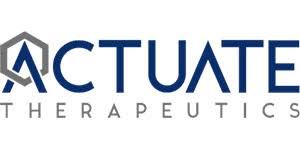预约演示
更新于:2025-05-07
Salivary gland carcinoma
涎腺癌
更新于:2025-05-07
基本信息
别名 Carcinoma of Salivary Gland、Carcinoma of the Salivary Gland、Salivary Gland Carcinoma + [6] |
简介 A carcinoma that arises from the major or minor salivary glands. Representative examples include carcinoma ex pleomorphic adenoma, adenocarcinoma, adenoid cystic carcinoma, and mucoepidermoid carcinoma. |
关联
24
项与 涎腺癌 相关的药物作用机制 PD-1抑制剂 [+1] |
在研机构 |
原研机构 |
在研适应症 |
非在研适应症- |
最高研发阶段批准上市 |
首次获批国家/地区 中国 |
首次获批日期2024-05-21 |
靶点 |
作用机制 AR拮抗剂 |
在研机构 |
原研机构 |
非在研适应症 |
最高研发阶段批准上市 |
首次获批国家/地区 中国 |
首次获批日期2022-06-28 |
79
项与 涎腺癌 相关的临床试验NCT04832438
Phase 2 Study of 9-ING-41, a Glycogen Synthase Kinase 3 Beta (GSK 3β) Inhibitor, Plus Carboplatin in Patients With Advanced, Metastatic Salivary Gland Carcinoma
9-ING-41 is a small molecule potent selective GSK-3β inhibitor with antitumor activity. This study investigates 9-ING-41 in combination with carboplatin chemotherapy in patients with incurable, recurrent or metastatic salivary gland carcinomas (SGC). Patients with advanced SGC (including all histologic subtypes and adenoid cystic carcinoma [ACC]) will receive 9-ING-41 intravenously (IV) along with carboplatin IV at standard dosing together on Day 1, and 9-ING-41 alone on Day 4 of a 21-day cycle. Participants will be enrolled to two histologic cohorts: Cohort 1 will be comprised of those with ACC, and Cohort 2 will include patients with non-ACC SGC (or all other salivary gland cancer histologies). Treatment will continue until progression of disease, death, or discontinuation of therapy for any reason.
开始日期2030-12-18 |
申办/合作机构 |
NCT06805617
A Phase 2 Trial of Ivonescimab for Patients With Advanced, Metastatic Salivary Gland Cancers (I-MAC)
The goal of this study is to evaluate the efficacy and safety of Ivonescimab in participants with advanced, metastatic salivary gland cancers.
The name of the study drug involved in this study is:
-Ivonescimab (a type of antibody)
The name of the study drug involved in this study is:
-Ivonescimab (a type of antibody)
开始日期2025-02-26 |
申办/合作机构 |
NCT06464198
Prospective Registry Study on the Implementation of Simultaneous Postoperative Radiochemotherapy for Salivary Gland Carcinomas of the Head and Neck Region
This is a prospective registry study based on a standard therapy concept for postoperative simultaneous radiochemotherapy established in Erlangen and elsewhere. The efficacy and tolerability of simultaneous postoperative radiochemotherapy is being investigated. Patients with locally advanced high-grade salivary gland carcinoma after oncological resection are admitted.
开始日期2024-06-01 |
100 项与 涎腺癌 相关的临床结果
登录后查看更多信息
100 项与 涎腺癌 相关的转化医学
登录后查看更多信息
0 项与 涎腺癌 相关的专利(医药)
登录后查看更多信息
2,024
项与 涎腺癌 相关的文献(医药)2025-06-01·Journal of Stomatology, Oral and Maxillofacial Surgery
Salivary gland secretory carcinoma: A case presentation in minor salivary gland with review
Article
作者: Jacomacci, Willian Pecin ; Tolentino, Elen de Souza ; Sedassari, Bruno Tavares ; Lopes, Camila Cardoso ; Camarini, Camila ; de Miranda, Fabio Vieira ; Cardoso, Camila Lopes ; de Souza Tolentino, Elen
2025-06-01·Oral Oncology
The impact of HER2-Low expression in salivary duct carcinoma: Clinicopathologic features, survival outcomes, and association with androgen receptor-targeted therapy
Article
作者: Sato, Yukiko ; Yamamura, Koji ; Yamauchi, Mayu ; Fushimi, Chihiro ; Okada, Takuro ; Saigusa, Natsuki ; Takahashi, Hideaki ; Honma, Yoshitaka ; Hanazawa, Toyoyuki ; Iwaki, Sho ; Tsukahara, Kiyoaki ; Nagao, Toshitaka ; Kano, Satoshi ; Matsuki, Takashi ; Sato, Yuichiro ; Sekimizu, Mariko ; Imaizumi, Sae ; Urano, Makoto ; Imanishi, Yorihisa ; Nakaguro, Masato ; Ozawa, Hiroyuki ; Shimizu, Akira ; Utsumi, Yoshitaka ; Hirai, Hideaki ; Sakai, Akihiro ; Hanyu, Kenji ; Yamazaki, Keisuke ; Tanaka, Ryoko ; Okami, Kenji ; Ueki, Yushi ; Yamamoto, Hidetaka ; Kawakita, Daisuke ; Saito, Yuki ; Tada, Yuichiro ; Arai, Tomoyuki
2025-05-01·Oral Oncology
Precision medicine in Salivary Gland Carcinoma: Insights from breast and prostate cancer
Review
作者: Resteghini, Carlo ; Gili, Riccardo ; Bossi, Paolo ; Gerosa, Riccardo ; Zucali, Paolo Andrea ; Gurizzan, Cristina ; Lorini, Luigi ; Cecchi, Luigi ; Zambelli, Alberto
13
项与 涎腺癌 相关的新闻(医药)2025-04-29
·恒瑞医药
美国临床肿瘤学会(ASCO)年会是全球最大的肿瘤治疗领域国际会议之一。今年ASCO年会将于美国芝加哥当地时间5月30日~6月3日举行。近日,ASCO官网公布了本次年会的研究摘要题目。作为创新型国际化制药企业的恒瑞医药,肿瘤领域产品相关研究再获高度认可,目前已确定有69项研究入选本次会议,其中创新药研究67项。包括4项口头报告(Oral)、5项快速口头报告(Rapid Oral)、24项壁报展示(Poster)、36项线上发表(Publication Only)1。研究成果涵盖消化系统肿瘤、乳腺癌、肺癌、妇科肿瘤、泌尿肿瘤、黑色素瘤、头颈肿瘤、肉瘤、鼻咽癌、血液肿瘤和硬纤维瘤等十余个肿瘤治疗领域。涉及的创新药包括6款已上市创新产品:注射用卡瑞利珠单抗(艾瑞卡®)、甲磺酸阿帕替尼片(艾坦®)、马来酸吡咯替尼片(艾瑞妮®)、羟乙磺酸达尔西利片(艾瑞康®)、阿得贝利单抗注射液(艾瑞利®)、氟唑帕利胶囊(艾瑞颐®),以及9款未上市创新产品:抗PD-L1/TGF-βRII双抗瑞拉芙普-α(SHR-1701)、多靶点受体酪氨酸激酶抑制剂法米替尼、IL-15融合蛋白SHR-1501、双特异性抗体SHR-2017、全人源抗CTLA-4单克隆抗体SHR-8068、抗体偶联药物(ADC)瑞康曲妥珠单抗(SHR-A1811)、SHR-1826、SHR-A1912、SHR-A2102。2类新药盐酸伊立替康脂质体注射液(II)(越优力®)及国内首仿药昂丹司琼口溶膜(艾其速®)各有1项研究入选。019项创新药研究成果入选口头报告和快速口头报告本次ASCO年会,将由中山大学肿瘤防治中心张阳教授、上海市胸科医院钟润波教授、复旦大学附属肿瘤医院季冬梅教授、上海长征医院杨诚教授分别就4项恒瑞医药创新产品相关研究带来口头报告,包括SHR-1826治疗实体瘤、SHR-A2102治疗实体瘤、瑞康曲妥珠单抗(SHR-A1811)治疗唾液腺癌,以及卡瑞利珠单抗联合阿帕替尼治疗脊索瘤。此外,复旦大学附属肿瘤医院邵志敏教授、河南省肿瘤医院闫敏教授、复旦大学附属肿瘤医院李婷教授、湖南省肿瘤医院李亚军教授、北京大学肿瘤医院毛丽丽教授将分别带来快速口头报告,内容涉及达尔西利治疗乳腺癌、瑞康曲妥珠单抗(SHR-A1811)治疗乳腺癌、阿得贝利单抗治疗乳腺癌、SHR-A1912治疗淋巴瘤以及卡瑞利珠单抗联合阿帕替尼治疗黑色素瘤。本次ASCO年会共有9项研究成果入选口头报告和快速口头报告,充分彰显了恒瑞医药在创新药物研发领域的深厚积累与卓越实力,有力证明了公司在全球学术舞台上的竞争力,同时也是我国医药创新高质量发展的重要例证。(2025 ASCO恒瑞产品相关研究4项入选口头报告,5项入选快速口头报告)02消化系统肿瘤领域:卡瑞利珠单抗续写新篇章在消化系统肿瘤领域,卡瑞利珠单抗、阿帕替尼、阿得贝利单抗、SHR-8068等创新药,共有28项研究入选(包括6项壁报和22项线上发表)。其中卡瑞利珠单抗占据20项,全面展现其显著特点与潜力,继续续写国产PD-1抑制剂崭新篇章。此外,在肺癌领域收获亮眼成绩的阿得贝利单抗也在积极探索新的适应症,本次ASCO大会分别有肝癌、胆管癌、胰腺癌等4项相关研究入选。这些新老药物前沿研究的不断出现,有望为消化系统肿瘤患者带来更多获益!03乳腺癌领域:吡咯替尼、达尔西利持续发力引关注在乳腺癌领域,吡咯替尼、达尔西利、卡瑞利珠单抗、阿帕替尼、阿得贝利单抗、瑞康曲妥珠单抗(SHR-A1811)、SHR-2017,或产品间联合或联合化疗,共有19项研究入选(包括3项快速口头报道和7项壁报展示以及9项线上发表)。其中吡咯替尼占据7项、达尔西利占据6项,持续发力展现令人鼓舞的疗效;而瑞康曲妥珠单抗(SHR-A1811)、阿得贝利单抗等药物相关研究入选快速口头报告,获得业内广泛关注。04其他肿瘤领域:多维突破,彰显强劲综合实力在肺癌、妇科肿瘤、淋巴瘤、膀胱癌、头颈肿瘤、黑色素瘤、肉瘤、鼻咽癌、脊索瘤、唾液腺癌、胸腺癌、硬纤维瘤、涎腺导管癌等其他多个疾病领域,卡瑞利珠单抗、阿帕替尼、阿得贝利单抗、吡咯替尼、达尔西利、氟唑帕利、法米替尼、SHR-1501、瑞拉芙普-α(SHR-1701)、SHR-1826、瑞康曲妥珠单抗(SHR-A1811)、SHR-A1912、SHR-A2102等抗肿瘤创新药相关研究一共入选了4项口头报告、2项快速口头报告、11项壁报展示和4项线上发表,彰显了恒瑞医药强劲的研发实力。此外,昂丹司琼口溶膜在防治化疗导致的恶心呕吐方面展现出了良好的疗效,本次ASCO年会有1项研究线上发表。《“健康中国2030”规划纲要》提出总体癌症5年生存率提高15%的目标。抗肿瘤药物是癌症患者改善生存、延长生命的重要希望。作为创新型国际化制药企业,恒瑞医药五十余年来始终践行“科技为本,为人类创造健康生活”的使命,深耕肿瘤药物等高品质创新药研发,目前已在中国获批上市19款新分子实体药物(1类创新药),其中抗肿瘤药占比过半。另有90多个自主创新产品正在临床开发,约400项临床试验在国内外开展。本次ASCO年会上,恒瑞医药多项创新产品研究成功入选,不仅彰显了公司在药物研发领域的深厚实力,更让全球肿瘤学界见证了中国医药创新的蓬勃力量。未来,恒瑞医药将持续“以患者为中心”加速创新研发步伐,致力于推出更多新药好药,服务健康中国,造福全球患者。参考文献:1.https://meetings.asco.org/abstracts-presentations/search?query=*&q=2025%20ASCO%20Annual%20Meeting声明:1.本新闻旨在分享学术前沿动态,仅供医疗卫生专业人士基于学术目的参阅,非广告用途。2.恒瑞医药不对任何药品和/或适应症作推荐。3.本新闻中涉及的信息仅供参考,请遵从医生或其他医疗卫生专业人士的意见或指导。医疗卫生专业人士作出的任何与治疗有关的决定应根据患者的具体情况并遵照药品说明书。撰稿:肿瘤中央医学事务部排版:程梦真责编:李玉莹往期精选| 研发创新 |恒瑞创新药、中国首个自主研发JAK1抑制剂硫酸艾玛昔替尼片获批上市全球首个超长效PCSK9单抗!恒瑞降脂创新药瑞卡西单抗获批上市| 国际化 |恒瑞医药与默沙东就Lp(a)抑制剂HRS-5346签订独家许可协议| 重磅奖项 |喜报!恒瑞医药荣获2023年度国家科技进步奖恒瑞医药连续六年入选全球制药企业50强榜单!| 社会公益 |“健康中国行·重走长征路”项目启动仪式圆满举行!恒瑞提供公益支持,助力健康中国恒瑞医药集团向中国扶贫基金会捐赠3000万设立“健康帮扶基金”
ASCO会议抗体药物偶联物临床结果申请上市临床1期
2025-04-03
·兰卫医学
新项目速递2025年第一季度新项目开展通知为方便客户及时了解兰卫医学新检验项目开展动态,我们将定期在公众号发布兰卫医学检验项目的新开展项目信息。欲了解更多最新项目信息,敬请持续关注【兰卫医学】最新项目资讯。2025年第一季度新项目开展汇总1.1 新项目开展汇总表1.2 新项目开展汇总明细01抗磷脂酰丝氨酸/凝血酶原(aPS/PT)IgM抗体检测方法:化学发光法报告周期:2个工作日样品要求:样品采集容器:黄帽分离胶管样品类型:全血3mL送检要求:室温:8h,冷藏48h,冷冻长期检测意义:辅助诊断特定自身免疫血栓性疾病,例如磷脂综合征和系统性红斑狼疮或其他狼疮样疾病继发异常。02抗磷脂酰丝氨酸/凝血酶原(aPS/PT)IgG抗体检测方法:化学发光法报告周期:2个工作日样品要求:样品采集容器:黄帽分离胶管样品类型:全血3mL送检要求:室温:8h,冷藏48h,冷冻长期检测意义:辅助诊断特定自身免疫血栓性疾病,例如磷脂综合征和系统性红斑狼疮或其他狼疮样疾病继发异常。03胰高血糖素测定检测方法:化学发光法报告周期:1个工作日样品要求:样品采集容器:EDTA-K2抗凝管样品类型:全血3mL送检要求:分离后的血浆2-8℃保存24小时检测意义:病理性增高:血浆胰高血糖素增高主要见于胰腺A细胞瘤或胰高血糖素瘤病人,多伴有体重减轻、高血糖症。病理性降低:血浆胰高血糖素减低主要见于慢性胰腺炎。潜在变异来源(干扰因素):体内存在异嗜性抗体对结果有影响。药物及机体物质对检验结果的影响:长期使用磺酰脲类药物,导致结果偏低。04ETV6/NTRK3融合基因(FISH)检测方法:荧光原位杂交法(FISH)报告周期:3-5个工作日样品要求:样品采集容器:密封袋;玻片盒样品类型:防脱石蜡白片2-3张,厚度2-3um检测意义:见于分泌性乳腺癌,预后好,可与导管内癌相鉴别,靶向治疗靶点。05MYB-NFIB基因重排(FISH)检测方法:荧光原位杂交法(FISH)报告周期:3-5个工作日样品要求:样品采集容器:密封袋;玻片盒样品类型:防脱石蜡白片2-3张,厚度2-3um检测意义:约50%的腺样囊腺癌可出现特异的MYB基因异常,在其他的涎腺肿瘤或非涎腺肿瘤中未见此融合基因异常,辅助诊断腺样囊腺癌。项目变更汇总2.1 项目变更汇总明细向上滑动阅览【温馨提示】- 以上项目开展/变更时间以各地实验室实际开展/变更时间为准。- 项目送检费用、报告周期、送检详细注意事项以及其他信息请拨打400-021-9090客服热线获得专业解答。
2025-04-02
·今日头条
100%肿瘤患者接受“泛癌种”新药治疗后肿瘤不同程度缩小或控制稳定,超过
60%
患者肿瘤显著缩小30%以上,国研新一代“不限癌种”靶向药ICP-723成为NTRK阳性肿瘤患者抗癌新希望!
肿瘤靶向药物的成功研发正在不断创造更多的生存奇迹,研究人员发现首个不区分癌种的可用药基因--NTRK,一种导致多种成人和儿童恶性癌症发生的致癌基因,成为全球最火的抗癌靶点之一。针对这一靶点已上市的两款靶向药物拉罗替尼和恩曲替尼因临床数据卓越,每年可以帮助成千上万的人,很多NTRK融合癌症患者接受治疗后重新回到了正常生活,这两款药物也在国内病友们的期待中在中国获批上市。相关阅读:治疗8周肿瘤完全消退!260万的天价抗癌药可治疗25类癌症,国内已有患者用药然而耐药问题是所有正在接受靶向治疗的患者无法避免的生存挑战。
好消息是新一代靶向药物的出现已经让众多面临绝境的耐药患者成功续命!近期,国研第二代小分子泛 TRK 抑制剂
Zurletrectinib
2期注册试验已在中国成功完成,并已于2025年3月底提交NDA上市申请。旨在治疗
NTRK基因融合阳性的癌症患者
,无论患者是否首次接受TRK抑制剂治疗或已对第一代TRK抑制剂产生耐药性,且
不限制癌症类型
。
疾病控制率高达100%!国研新一代“泛癌种”新药ICP-723让多名肿瘤患者奇迹缓解
Zurletrectinib(ICP-723)是我国自主研发的新一代
“超级”
泛TRK抑制剂,与美国研发的两款第二代NTRK抑制剂相比,ICP-723不仅能够有效抑制 TRKA、TRKB、TRKC,而且能够有效抑制 TRKA的耐药性突变G595R和 G667C等,可以克服第一代 TRK抑制剂的获得性耐药。
ICP-723可以治疗携带NTRK融合基因的晚期或转移性实体瘤,包括乳腺癌、结直肠癌、肺癌、甲状腺癌等,以及对第一代NTRK抑制剂拉罗替尼和恩曲替尼耐药的患者。
2021年8 月 31 日InnoCare Pharma公司宣布其第二代泛 TRK 抑制剂 ICP-723 获得美国食品药品监督管理局(FDA)的研究性新药批准在美国开始 I 期临床试验。
在2022年的ASCO大会上,我们首次看到了这款国研药物的初步临床数据,非常振奋人心!多名接受治疗的患者不仅病情得到了稳定,甚至出现了肿瘤明显缩小的喜人情况。
在这项 I 期剂量递增研究中,截止到2022年2月11日,共有17 名患者接受 ICP-723 治疗,剂量为 1 mg QD 至 8 mg QD,其中6名为NTRK融合阳性的患者。
结果显示:
6例NTRK融合患者中,总客观缓解率(ORR,靶病灶缩小30%以上)为66.7%(4例),疾病控制率(DCR)高达100%,这意味着6例NTRK融合阳性的患者在接受ICP-723治疗后,病情都得到了有效控制,病灶稳定或显著缩小。
值得一提的是,1名脑转移的患者也达到了部分缓解,脑部靶病灶从 10 毫米缩小到 3 毫米。
所有获得部分缓解的患者在 4 周治疗后的第一次肿瘤评估时均对 ICP-723 做出反应,并且所有达到部分缓解的患者在数据截止时仍持续响应。
根据上述初步研究数据表明,ICP-723在晚期实体瘤患者中安全且耐受性良好。各种癌症类型的NTRK基因融合的患者出现了得到了令人鼓舞的临床疗效,包括入脑活性。
目前,无论年龄大小(2-75周岁),无论肿瘤部位,无论什么类型的恶性癌症,只要存在特定的NTRK融合基因,就有机会参加ICP-723在国内开展的临床,接受新药治疗。国内已有多名患者入组成功接收治疗并得到奇迹缓解!以下病历来自中山大学肿瘤防治中心儿童肿瘤科公众号分享:
01
涎腺癌缩小50%以上
12岁的花季少年因为左耳垂下肿胀1年去医院进行检查,结果确诊为涎腺源性肿瘤,并且因为肿瘤巨大(52*41*62mm),差不多和橙子一样,累及左侧下颌骨,无法手术,于是在2022-10-24入组新一代NTRK抑制剂ICP-723在实体肿瘤患者中的安全性、耐受性、药代动力学的多中心、 非随机、 开放性Ⅰ/Ⅱ期临床试验。2022-10-25 开始接受ICP-723治疗后,奇迹出现,仅3天,肿瘤显著缩小,15天后的照片对比能看到肿瘤持续消退。截至2023年7月,肿瘤已经缩小一半以上(20*14*25mm),并且仍在持续治疗中。
02
恶性梭形细胞瘤11周缩小51.9%
15岁的恶性梭形细胞肿瘤患者在接受了左侧腹股沟肿物切除后复发,化疗后病情进展。幸运的是基因检测发现
TPM3-NTRK1融合阳性
,在接受8mg ICP-723治疗后一个周期,经影像学评估,首次肿瘤疗效评估即达到部分缓解(PR),靶病灶缩小37%,接受第11周期的治疗时靶病灶已缩小51.9%, 疗效进一步维持。
03
1代NTRK抑制剂耐药,ICP-723治疗后肿瘤显著缩小
一位软组织恶性梭形细胞肿瘤伴肺部转移的患者,基因检测显示ETV6-NTRK3融合,接受化疗和9个周期的第一代TRK抑制剂后出现疾病进展。在国内接受5个周期ICP-723的治疗后,肺部非靶病灶明显缩小、右大腿靶病灶达到手术条件,右大腿病灶手术切除后病理提示已未见肿瘤组织。
04
宫颈癌肺及多发骨转移花季少年病灶缩小
一位确诊为宫颈透明细胞癌伴肺部及多发骨转移的花季女孩,接受了子宫及双附件切除手术和放化疗后出现进展,接受ICP-723治疗仅1周期部转移灶较基线缩小近20%
。
喜讯!ICP-723临床研究启动,
国内多家癌症中心招募
成人及儿童患者!
值得振奋的是,目前在中国,ICP-723的临床试验目前正在招募患者,已经有大量NTRK阳性的患者通过全球肿瘤医生网成功入组。
药品名称:
ICP-723(Zurletrectinib)
作用靶点:
NTRK
研发公司:
InnoCare Pharma公司
适应症:
NTRK融合阳性实体瘤(成人及儿童)
招募信息(部分):
1.经组织病理学证实手术不可切除的局部晚期或者转移性实体瘤或原发性中枢神经系统肿瘤,已知的治疗方式无效或复发的;标准治疗下仍发生进展、不耐受标准治疗或不存在标准治疗的患者;
2.经指定的中心实验室检测到携带NTRK基因融合;
3.既往未接受过其他TRK抑制剂规范治疗
总之,Zurletrectinib作为一款新型、高效的抗癌药物,为NTRK融合阳性肿瘤患者带来了新的治疗选择。在某些罕见的肿瘤类型(例如 先天性婴儿纤维肉瘤等)中,NTRK基因融合发生率高达
90%
。NTRK基因融合与至少
19种
成人和儿童的肿瘤类型相关,包括
肺癌、结直肠癌、乳腺癌、胰腺癌和胃癌
等。
Zurletrectinib的出现,不仅为这些患者带来了希望之光,也让我们看到了人类在抗癌道路上的不断进步和突破。Zurletrectinib正在中国推进注册临床试验,预计今年年底提交新药上市申请。8毫克及以上剂量组,不同实体瘤NTRK基因融合阳性患者中,总缓解率(ORR)高达
80-90%
。让我们共同期待ICP-723在未来能够带来更多的惊喜和突破,为更多肿瘤患者带来治愈的可能。
本文为全球肿瘤医生网原创,未经授权严禁转载
ASCO会议临床结果临床1期临床2期
分析
对领域进行一次全面的分析。
登录
或

生物医药百科问答
全新生物医药AI Agent 覆盖科研全链路,让突破性发现快人一步
立即开始免费试用!
智慧芽新药情报库是智慧芽专为生命科学人士构建的基于AI的创新药情报平台,助您全方位提升您的研发与决策效率。
立即开始数据试用!
智慧芽新药库数据也通过智慧芽数据服务平台,以API或者数据包形式对外开放,助您更加充分利用智慧芽新药情报信息。
生物序列数据库
生物药研发创新
免费使用
化学结构数据库
小分子化药研发创新
免费使用





